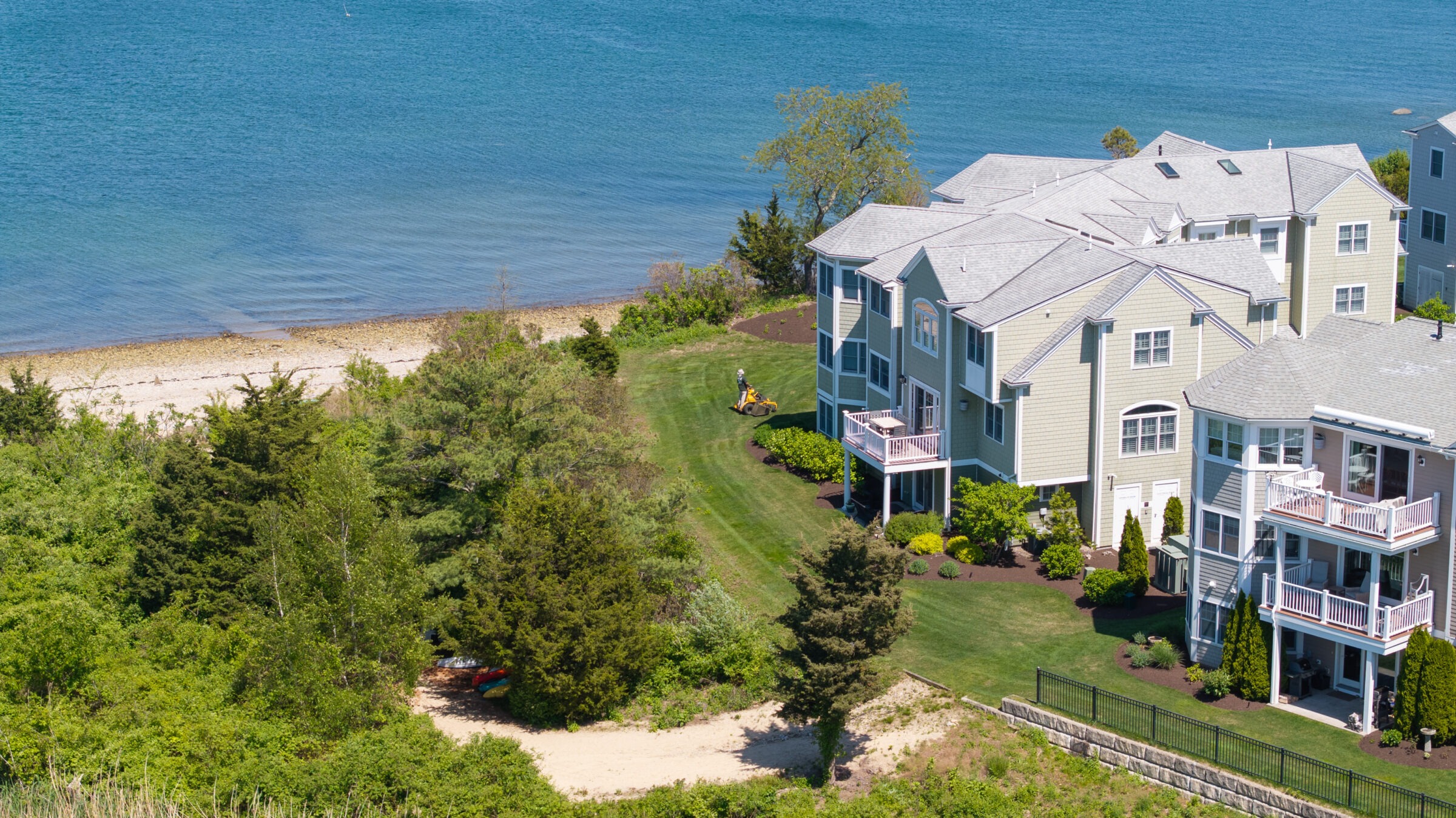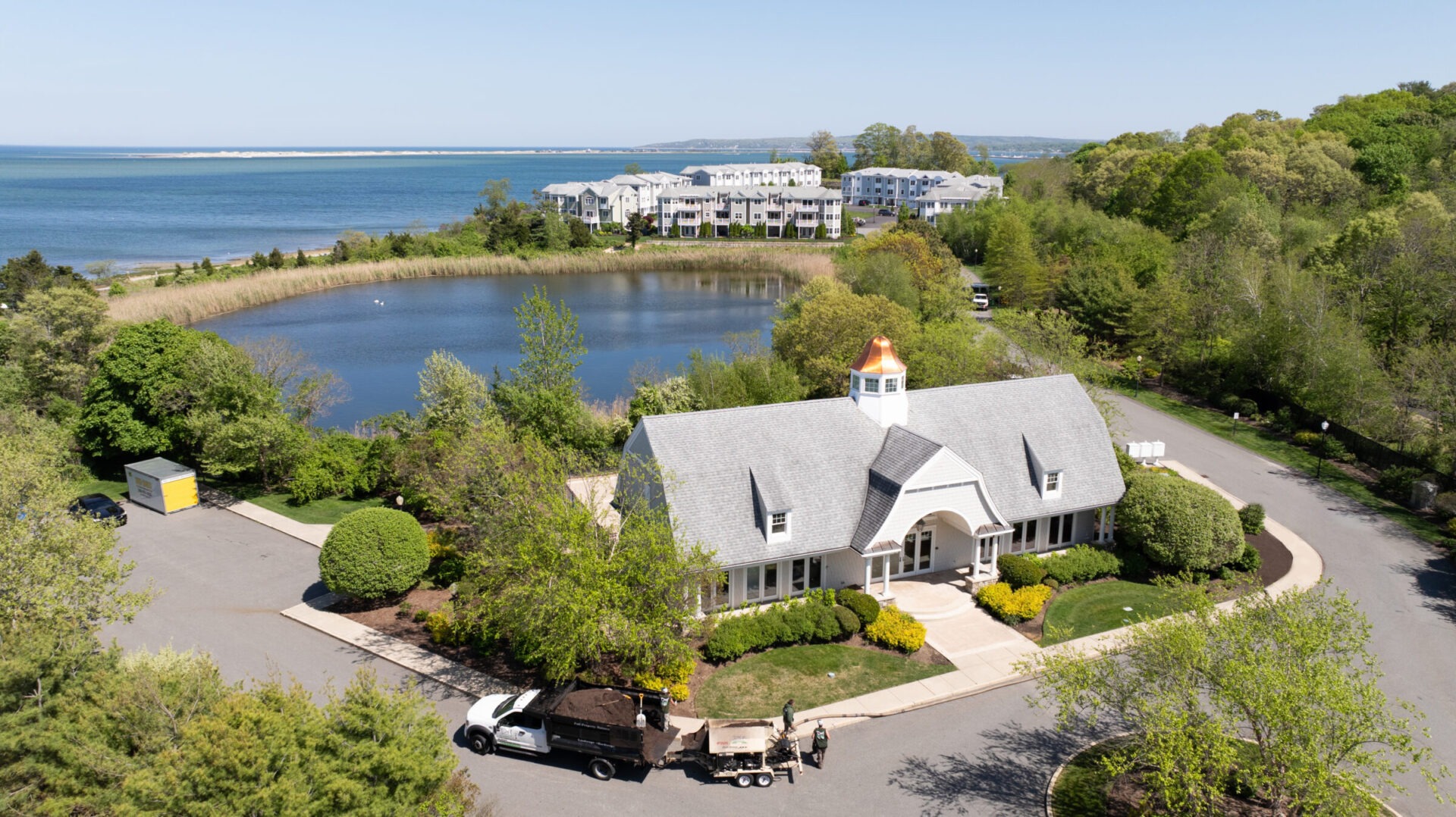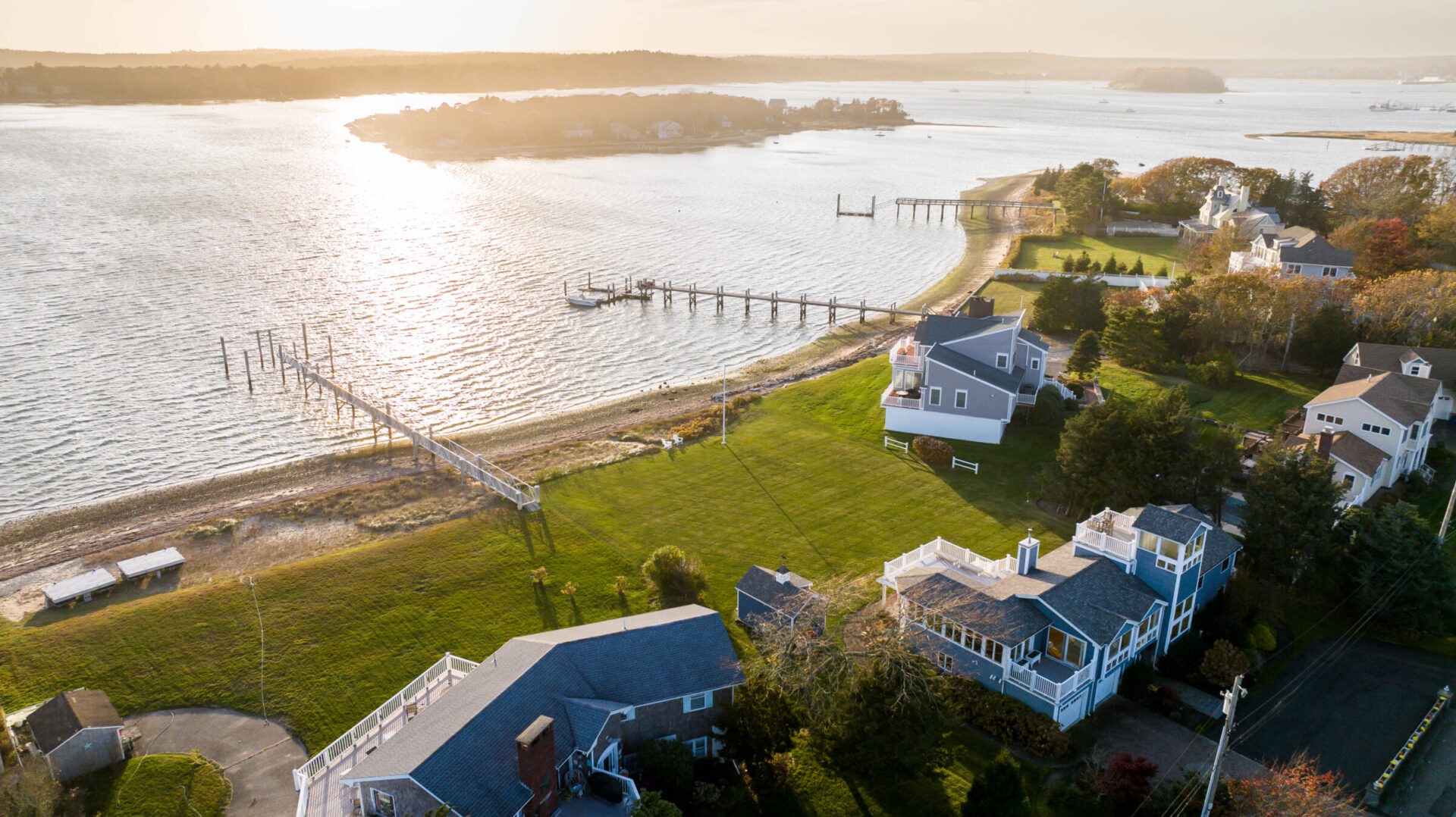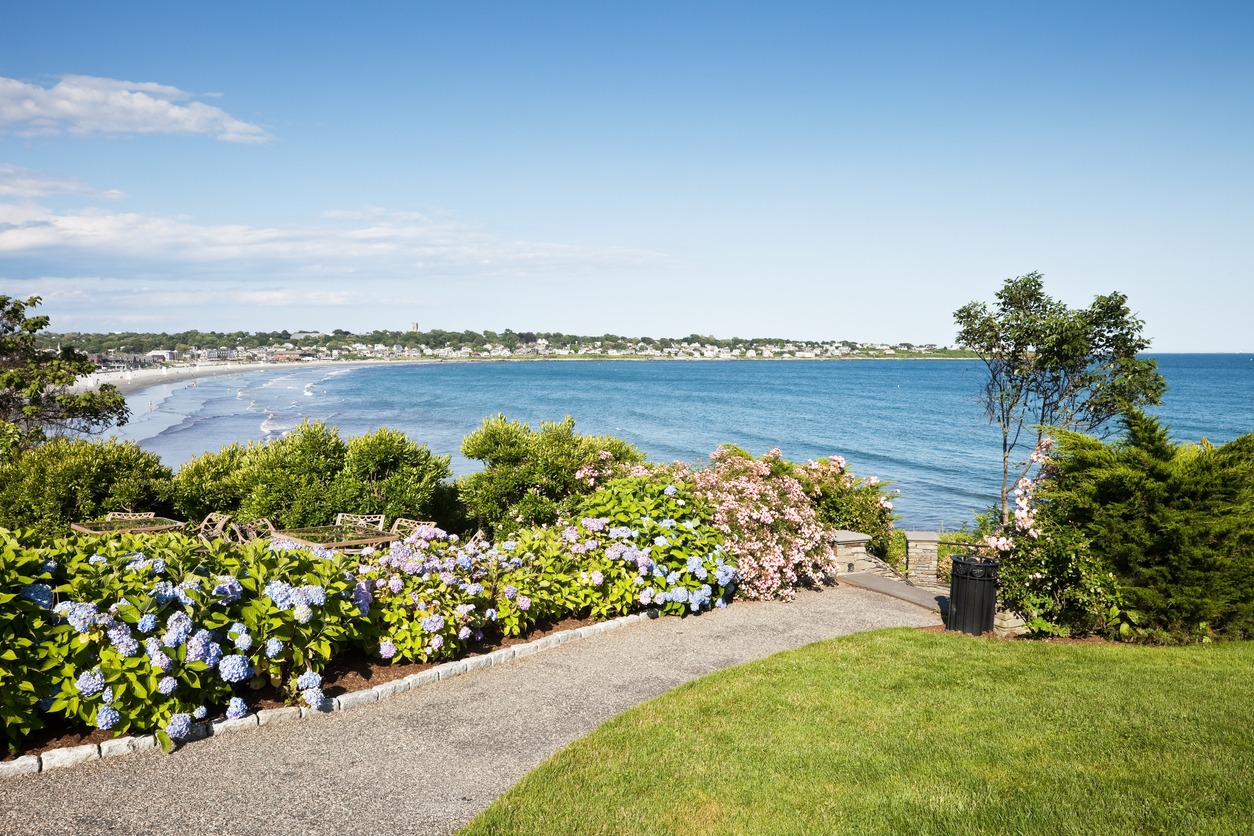Coastal New England Landscape Ideas

Living by the New England coast offers gorgeous ocean views and breezy summer days, but if you’ve tried gardening there, you know it can be challenging. Your favorite plants might wither from salty sea spray, fierce winds can shred delicate leaves, and the sandy soil in seaside yards won’t hold water or nutrients for long. It’s frustrating to plant a lush garden only to see it struggle in the harsh coastal environment. Many coastal homeowners feel stuck with sparse lawns or scorched plants, wondering if a beautiful yard is even possible by the sea.
The aggravation is real: salt in the air builds up on foliage, dehydrating plants and stunting their growth. Strong ocean winds topple top-heavy plants and dry out the soil faster than you can water. And that beach sand under your grass? It drains quickly, leaving roots parched and vulnerable. No wonder a typical inland landscape plan won’t survive long on the shore. It might seem like Mother Nature is determined to keep your coastal yard bare and battered.
By embracing salt-tolerant plants, clever windbreaks, and design elements inspired by the beach, you can transform your seaside property into a thriving oasis. The key is to work with the coastal conditions rather than against them. In this blog, we’ll explore how to do exactly that. From hardy shrubs that love salty air to Cape Cod style touches like picket fences and hydrangeas, you’ll discover practical coastal landscaping ideas to beautify your New England home. Let’s turn those coastal challenges into opportunities for a stunning, resilient garden by the sea!
Find more creative ideas in our Ultimate Landscaping Inspiration Guide.
Coastal Landscaping Challenges & Solutions

Before diving into design ideas, it’s important to understand what makes coastal landscaping tough and how to overcome those challenges. The New England seaside climate is unique, presenting a mix of salt, wind, and sandy soil conditions that can stress typical gardens. Fortunately, each challenge has a creative solution that will help your landscape not just survive but thrive.
Salt & Wind: Nature’s Coastal One-Two Punch
Coastal plants face two main enemies: salt and wind. Salt, from ocean spray or salty soil, causes “physiological drought,” browning and desiccating plants. Wind physically damages plants, dries out the soil, and can uproot trees.
The solution is to choose resilient, coastal-friendly plants and provide wind protection. Select salt-tolerant plants with adaptations like waxy leaves. Add windbreaks such as dense hedges or sturdy trees like Eastern red cedars to filter wind and protect delicate garden areas. Fencing or lattice panels with climbing vines can also offer shelter. By buffering your garden and using wind-tolerant plants, you’ll reduce stress on your landscape.
Sandy Soils & Erosion: From Challenge to Opportunity
Coastal New England properties often have sandy or rocky soil, which drains quickly and lacks nutrients, causing plants to wilt and increasing erosion risk.
Amend soil with compost or loam and choose plants adapted to sandy conditions. American beachgrass and ornamental grasses stabilize sand, while groundcovers like bearberry and lowbush blueberry prevent erosion. These native, drought-tolerant plants thrive in the coastal environment.
Coastal gardens also benefit from milder winters and summer breezes, allowing for plants like bigleaf hydrangeas. Designing landscapes to echo the natural surroundings creates a harmonious scene. The next section will detail specific landscaping ideas for New England beach towns.
Coastal Landscaping Ideas & Cape Cod Inspiration

With the challenges in mind, now it’s time for the fun part: envisioning and implementing a coastal landscape design that thrives by the sea. The following ideas focus on salt-tolerant, seaside-friendly plants and design elements inspired by the beach and the classic Cape Cod aesthetic. Whether you’re sprucing up a beach cottage garden or a year-round coastal home, these tips will help your outdoor space handle the salty, breezy environment and look stunning.
Salt-Tolerant Landscape Design: Plants That Thrive by the Sea
Coastal gardeners should choose salt-tolerant plants. These resilient species thrive in salty air and sandy soils, offering low-maintenance beauty. Incorporate salt-hardy trees, shrubs, perennials, and groundcovers for year-round interest.
Salt-tolerant shrubs like rugosa roses (beach roses) and northern bayberry are excellent foundational choices. Rugosa roses, with their fragrant blooms and robust, thorny hedges, tolerate sea spray and storms, forming natural windbreaks. Northern bayberry, a native shrub, offers aromatic leaves and waxy berries, thriving in sandy soils and providing wildlife habitat.
Hydrangeas, particularly Bigleaf hydrangeas, are popular coastal New England choices. They tolerate salt, prefer acidic soils, and benefit from milder coastal winters, creating a classic Cape Cod look. They need morning sun, afternoon shade, and consistent moisture.
Don’t forget salt-tolerant perennials and grasses. Mediterranean herbs like lavender, sage, and rosemary thrive in salty, sandy soil. Rosemary, with its waxy leaves, resists salt and drought. Ornamental grasses are also highly salt and drought-tolerant.
Finally, salt-tolerant plants typically result in a low-maintenance, water-wise garden, requiring less irrigation and care. This allows more time to enjoy your coastal landscape.
Coastal Grasses & Shrubs for a Beachy Look
Coastal landscaping thrives on using beach grasses and seaside shrubs, which instantly create a dune-like feel. These plants not only endure the coastal climate but also embody it, blending your garden with the natural shoreline.
Ornamental grasses are vital for a New England beach house garden. Taller varieties like switchgrass (Panicum virgatum) and little bluestem (Schizachyrium scoparium) offer texture and motion. Little bluestem, native to North America, tolerates poor, dry, salty soils, making it perfect for coastal areas. Plant these to see them rustle in the breeze, catching sunlight in late summer. For lower borders, try blue fescue (Festuca glaula), a compact, blue-grey grass that thrives in sand. Sea oats (Uniola paniculata) are another charming choice, known for their flat, drooping seed heads, and love sand and sun.
Mixing these grasses with coastal shrubs further naturalizes your landscape. Beach plum (Prunus maritima) is an iconic New England coastal shrub, often found wild on dunes. It stays small (4–7 feet), produces white blossoms in spring, followed by small purple plums used for jam and wildlife. It’s very salt-tolerant and thrives in sandy, nutrient-poor soil, ideal for a seaside garden.
Another great native is northern bayberry and its evergreen cousin, inkberry holly (Ilex glabra). Inkberry is an evergreen shrub that can substitute boxwood in coastal areas. It tolerates salt spray and sandy or boggy soils, maintaining year-round green foliage. Use inkberry for foundation plantings or as a backdrop for perennials, providing winter greenery.
Incorporating these plants not only helps your garden survive but also creates a relaxed, beachy character. By choosing native or well-adapted plants, you support local wildlife and create a landscape that feels authentic to the region, making your yard seem like a natural part of the coastal environment.
Beach House Garden Ideas: Hardscapes with Coastal Flair

Enhance your coastal garden with hardscape and decor elements that evoke the seaside. Popular choices include crushed seashells for driveways and paths, a sustainable and low-maintenance option that provides excellent drainage and a bright, beachy aesthetic. Incorporate driftwood and natural timber for decorative borders or sculptural pieces, while nautical relics like anchors or lobster traps add character. Highlight natural stone and sand, using sea-rounded boulders, pea stone, or even creating a “sand area” with Adirondack chairs. Complement these with beach-inspired details like rope railings, lantern lights, or a wooden dune fence. Consider painting outdoor furniture in nautical blues or driftwood whites to complete the cohesive coastal design.
Windbreak Plantings for Coastal Shelter & Privacy
Windbreak plantings are living fences of trees and shrubs designed to shield coastal properties from wind and salt spray, while also adding privacy and structure.
Planning & Species Selection:
- Plant on the ocean-facing side of your property, using salt-tolerant, wind-resistant evergreens or dense shrubs for year-round protection.
- Eastern red cedar (Juniperus virginiana) is an excellent, hardy native conifer that thrives in coastal conditions, forming a dense screen.
- Eastern white pine (Pinus strobus) is another good choice, with flexible needles that withstand strong winds; it’s moderately salt-tolerant and grows tall.
- For lower hedges, American holly (Ilex opaca) is a traditional recommendation, offering thick, glossy leaves and red berries.
- Smaller options for hedges include inkberry holly and wax myrtle (southern bayberry), reaching 4–8 feet.
Layering & Benefits:
- Layering taller evergreens behind salt-tough shrubs (e.g., rugosa roses or viburnum) creates a tiered effect that slows wind at different heights and protects plants from salt spray.
- Beyond protection, windbreaks add beauty and privacy, serving as an attractive living wall that changes with the seasons. They can also become a feature with added vines or wildflowers.
- Ensure good initial watering and some young plant shelter for establishment. Once mature, a windbreak is a durable asset, providing lasting protection.
Cape Cod Landscaping Inspiration: Picket Fences & Hydrangeas
Embrace the classic Cape Cod style for a charming, simple, and seaside-harmonious landscape. A white picket fence with hydrangeas and climbing roses creates an iconic New England look. Emphasize simplicity and local character with native plants and grasses like beach grasses and bayberry, promoting natural xeriscaping and conserving water.
Enhance your garden with charming accessories: overflowing window boxes, grey-blue or white shutters, a simple arbor, and birdhouses or birdbaths. Integrate natural materials like shell driveways, bluestone paths, and wood. Use weathered neutral tones for your home to let the landscape’s colors pop, like the blues and pinks of hydrangeas. Avoid overly manicured or exotic plant schemes; aim for a slightly wild, windswept feel. Remember, “less is more”; the goal is a landscape that “blends in and contributes to the architecture of the home and its natural environment.”
Going Beyond Coastal Landscaping Ideas
Your coastal New England landscape can be both resilient and breathtaking. By choosing salt-tolerant plants, embracing beach-inspired materials, and adding a dash of Cape Cod charm, you’ll create a seaside sanctuary right at home. Whether you’re starting from scratch or reinventing an existing yard, the key is understanding the unique coastal environment, and now you know to do just that.
Ready to transform your coastal property into a gorgeous, salt-friendly oasis? D&J Landscaping is here to help. With our local expertise in the Wareham and South Coast, MA area, we know what it takes to design and maintain landscapes that thrive by the sea.
Contact Landscapes by D&J today to discuss your coastal landscaping ideas. Let’s work together to bring your vision to life and make your beach house garden dreams a reality!
Tags:
